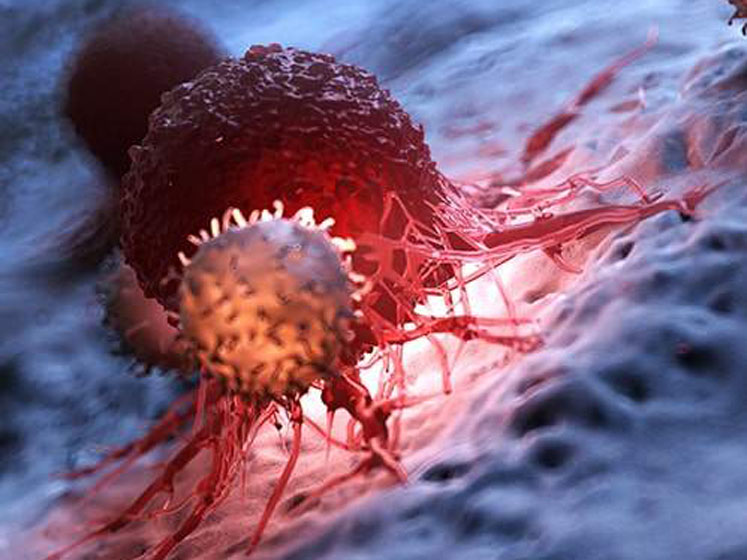In practice, reports Amanda Jones, Life Science Research Strategy Leader at PerkinElmer (pictured), immunotherapy manipulates a patient’s own immune system to detect and control a disease. As such, it creates an opportunity for high durability as our adaptive immune system is capable of developing immunological memory and recognising previously encountered antigens.
But whereas many types of cancer have been shown to respond well to immunotherapy, the diversity of solid tumours (as well as their tight communication with their microenvironment) has made it difficult for immune cell therapies to be successful beyond haematological cancers.
This realisation has paved the way for current research efforts to find complementary therapies that will enhance the efficacy of immunotherapy in unresponsive patients. At PerkinElmer, we focus on providing the tools that enable researchers to harness the potential of combinational therapy, which has already shown promising patient outcomes.
Current challenges in immunotherapy
In recent years, the scientific community has moved away from the perception of “every cancer being different” to the more granular view of “every cancer cell being different.” To this effect, personalised treatments require a greater depth of understanding of sample diversity and more effective monitoring during treatment.

A tumour is closely related and interacts constantly with its microenvironment, which can provide a protective blanket within which the tumour evades immune surveillance. Changes in the microenvironment can affect how cancer cells grow and spread, which in turn makes it easier for a patient to develop drug resistance.
By developing an understanding of the specific barrier an individual tumour has to any given targeted therapy, and identifying which drugs are available to break down that barrier, clinicians can improve outcomes for patients who have become resistant to standard therapies.
Given how complex cell biology and its many signalling pathways are, it can sound very simplistic to suggest that understanding specific tumour barriers is the solution to improve outcomes, which is the reason combinational therapy proves to be so attractive to researchers.
Numerous studies have either identified a lower mortality rate or confirmed the promises of combinational therapy.1,2 It allows multiple processes to be targeted, making treatment not only more effective but also more challenging for the tumour to develop new resistance mechanisms.
The rising importance of epigenetics
Immune checkpoint inhibitors (ICI) are one of the most successful forms of immunotherapy, particularly effective to treat melanoma skin cancer and lung cancer.3 Sadly, this treatment is plagued with patient resistance, either intrinsic or acquired. Such resistance stems from the sheer number of factors that need “functional” DNA expression for a patient to respond, which in turn provides many routes by which a tumour can escape immune killing.
Epigenetic therapies are one of the most promising avenues in the context of combinational therapy. They manipulate reversible changes in the tumour and improve both immune recognition and immunogenicity, therefore making the patient more receptive to secondary treatments (such as ICI).
The easiest way to understand the principles of epigenetics is by picturing the DNA in a cell as a repository of information and a cell’s epigenetics as the tools required to make effective use of such information. In immune cells and tumour cells, if the epigenetics of the cell can be manipulated, gene expression can be altered to adjust the immune response.

The field of epigenetics continues to provide much excitement in the research community. Recently, we’ve had the opportunity to discuss the benefits of epigenetics with Dr Stephen B. Baylin, MD, Virginia and D.K. Ludwig Professor of Oncology and Medicine, Codirector of the Cancer Biology Division and Associate Director for Research Programmes at The Sidney Kimmel Comprehensive Cancer Center at the Johns Hopkins University and Hospital in Baltimore, Maryland, US.
One of Dr Baylin’s most surprising findings in recent years involved cancer cell inflammasome activation and how it encompasses our viral defence response. Dr Baylin’s discovery was then employed to develop the PARP inhibitor approach, a type of targeted therapy with great potential to tackle breast and ovarian cancers, among others.
The promise of personalised therapy
Drug resistance remains the leading cause of cancer-related death. One of the hardest challenges to clinicians is to find ways to track and treat evolving cancer. Widespread adoption of single-cell sequencing technology is enabling researchers to understand the molecular mechanisms of cancer cells as they adapt to immunotherapy, with new breakthroughs coming to light every year.
The use of single cell sequencing in cancer research has already transformed our understanding of cancer lesions.4 Such breakthroughs, combined with functional drug testing, could one day offer more affordable and personalised therapy for everyone.
In addition, advances in the mutation detection of cell-free DNA, such as in the context of colorectal cancer, are enabling non-invasive monitoring of disease progression, meaning that early detection and evolution provide an opportunity to pivot treatment when needed.5
One powerful approach in any clinician’s arsenal right now is to employ combinational therapies to target multiple pathways or routes to resistance. Whether working synergistically, additively or independently, combinational therapy has shown clear and promising results in patient outcomes, and therefore deserves to dominate the cancer trial and treatment landscape.
My hope is that these approaches will help to drive down minimal residual disease, enabling people to live longer and healthier lives.
References
- www.ncbi.nlm.nih.gov/pmc/articles/PMC6821042/.
- https://pubmed.ncbi.nlm.nih.gov/33798808/.
- www.nature.com/articles/s41467-020-17670-y.
- https://jhoonline.biomedcentral.com/articles/10.1186/s13045-021-01105-2.
- www.ncbi.nlm.nih.gov/pmc/articles/PMC6639174/.




